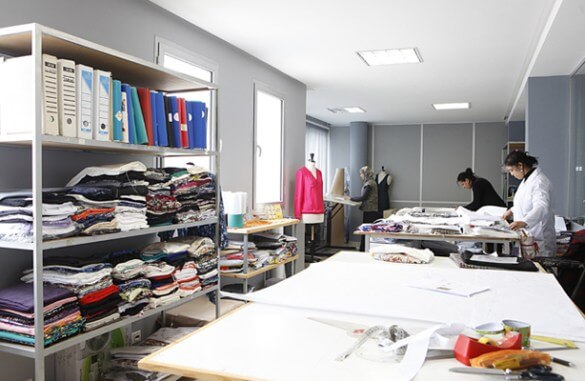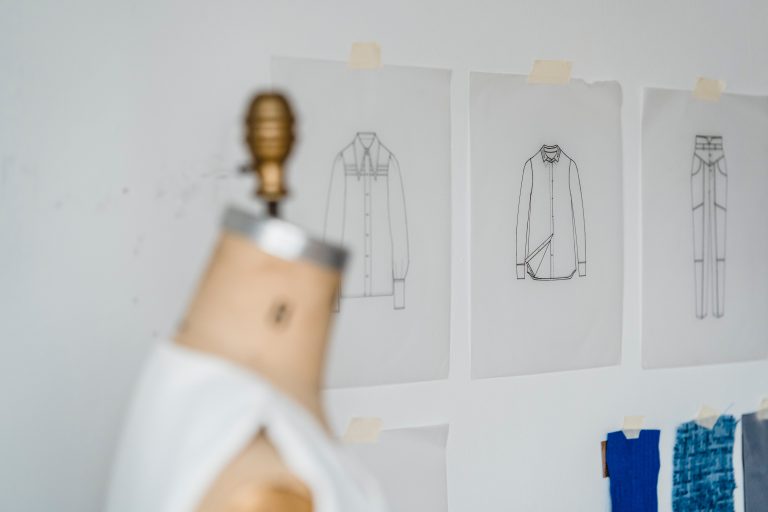
Introduction:
Sampling is a crucial step in the process of manufacturing clothing that significantly impacts order confirmation and customer satisfaction. The quality and responsiveness of the samples offered mostly influence buyers’ decisions to buy; hence the sampling phase is an important aspect of fashion merchandising. This stage is essential for converting the notions, perspectives, and ideas of fashion designers into concrete product prototypes. It also ensures that the product development process moves forward methodically, maintaining technical accuracy and clarity of quality.
Sample room, where sketches are turned into actual garments. This type of production room allows for the creation of a sample that is fully accurate, specified, and confirmed. The most seasoned and productive worker was typically in charge of the sample room area. The sample room is therefore the most crucial area in the clothing industry.
Experts in their respective fields, the sample room is staffed by designers, pattern makers, quality controllers, fit specialists, fabric specialists, sample pattern cutters, sample pressers, and sample machinists. When the patterns are finished, sample cutters lay them out on the chosen fabric and cut out the pieces needed to finish a style. The fabric pieces are handed down to the sample machinists who complete all sewing operations across a variety of sewing machines.

Types of samples and their importance:
– Development Sample
At the inception of any style, the first sample emerges, a pivotal point where the buyer or the factory initiates the design development process. The objective is to make informed decisions about advancing with a particular design line or opting for alternatives.
– Proto Sample:
In the early stages, the proto sample takes form, often determining the factory chosen for the order. Buyer requests for proto samples from multiple factories, with the one delivering optimal quality at a competitive price earning buyer confirmation. Proto samples are crafted using similar fabrics in the absence of the actual material, and substitutions for trims are permissible.
– Fit Sample:
The fit sample is meticulously crafted and dispatched to confirm garment fit, whether on live models or dummies. This stage is critical for obtaining approval on construction details.
– Showroom Sample:
Crucial for securing orders from retailers, the salesman sample utilizes actual accessories and fabrics. Its presentation significantly influences buyer sales, emphasizing the importance of maintaining impeccable sample quality.
– Size Set Sample:
The size set sample gauges the factory’s ability to produce the garment in all required sizes. Made with actual fabric and trims, this sample helps determine whether bulk production can commence across various sizes.
– GPT Sample (Garment Performance Test):
Conducted to assess the physical and chemical attributes of garments, the Garment Performance Test ensures the garment meets specific standards. Tests include shrinkage, color fastness, and seam performance, with results communicated to both the factory and the buyer.
– Pre-Production Sample (PP Sample):
Regarded as a contractual agreement between the buyer and the factory, the PP sample is crafted using original fabric and trims. Serving as the standard for production, bulk production must mirror the approved PP sample.
– Wash Sample:
Wash samples are created for buyer evaluation of the fabric’s feel and handle post washing. This is particularly relevant for denim or shirt washing programs. Feedback may lead to adjustments in the washing program.
– TOP Sample (Top of Production):
The TOP sample is dispatched to the buyer as the initial pieces emerge from the sewing line, offering insights into the actual manufacturing process. Buyers evaluate whether bulk production aligns with the submitted sample and also assess packaging.
– Shipment Sample:
Some buyers may request shipment samples pulled directly from the actual shipment. This sample assures the buyer regarding the dispatch of the finalized order, confirming adherence to quality and specifications.
The sample room or sample unit in a garment factory holds immense importance as it serves as the creative and technical hub where initial design concepts are translated into tangible prototypes.
This specialized section plays a pivotal role in the garment manufacturing process for several reasons:
1. Prototype Development: The primary function of the sample room is to bring designers’ concepts to life by creating prototypes of garments. This process allows designers, merchandisers, and clients to visualize and evaluate the design before mass production. It is a crucial step in refining and finalizing the product’s aesthetics, ensuring it aligns with the client’s expectations.
2. Quality Assurance: The sample room is instrumental in maintaining and enhancing the quality standards of the final product. By meticulously crafting samples, manufacturers can identify potential issues in terms of materials, construction, or design early in the production process. This proactive approach contributes to overall quality control.
3. Client Approval: Clients often require samples to assess the manufacturer’s capability and to approve the final design before placing bulk orders. The sample unit, therefore, acts as a showcase for the manufacturer’s skills and capabilities, helping to instill confidence in clients and secure business partnerships.
4. Communication Tool: Samples act as a tangible means of communication between the design team, merchandisers, and production units. They serve as a reference point for conveying design details, specifications, and any modifications required. This helps in minimizing misunderstandings and ensures that everyone involved in the production process is on the same page.
5. Market Testing: Before committing to large-scale production, manufacturers can use samples to test market response. By showcasing prototypes to potential buyers or target consumers, manufacturers can gauge the product’s appeal and make necessary adjustments based on feedback, reducing the risk of producing items that may not resonate with the market.
6. Efficiency and Time Management: The sample room plays a crucial role in streamlining the production process by identifying and rectifying issues at an early stage. This helps in minimizing delays and ensures that the final product meets the agreed-upon specifications. Efficient sample development contributes to overall time management in the production schedule.
7. Innovation and Adaptability: The sample room is a space where innovative ideas can be explored and tested. It allows for experimentation with new materials, techniques, and designs, fostering a culture of creativity and adaptability within the garment factory. This can be especially important in a dynamic and ever-changing fashion industry.
In this synthesis of creativity, efficiency, and innovation, the sampling room becomes a crucible of adaptation to the ever-evolving demands of the fashion landscape. It is a realm where risks are taken, new materials embraced, and design boundaries pushed—a testament to the industry’s resilience and ability to stay ahead of the curve.



Leave a Comment